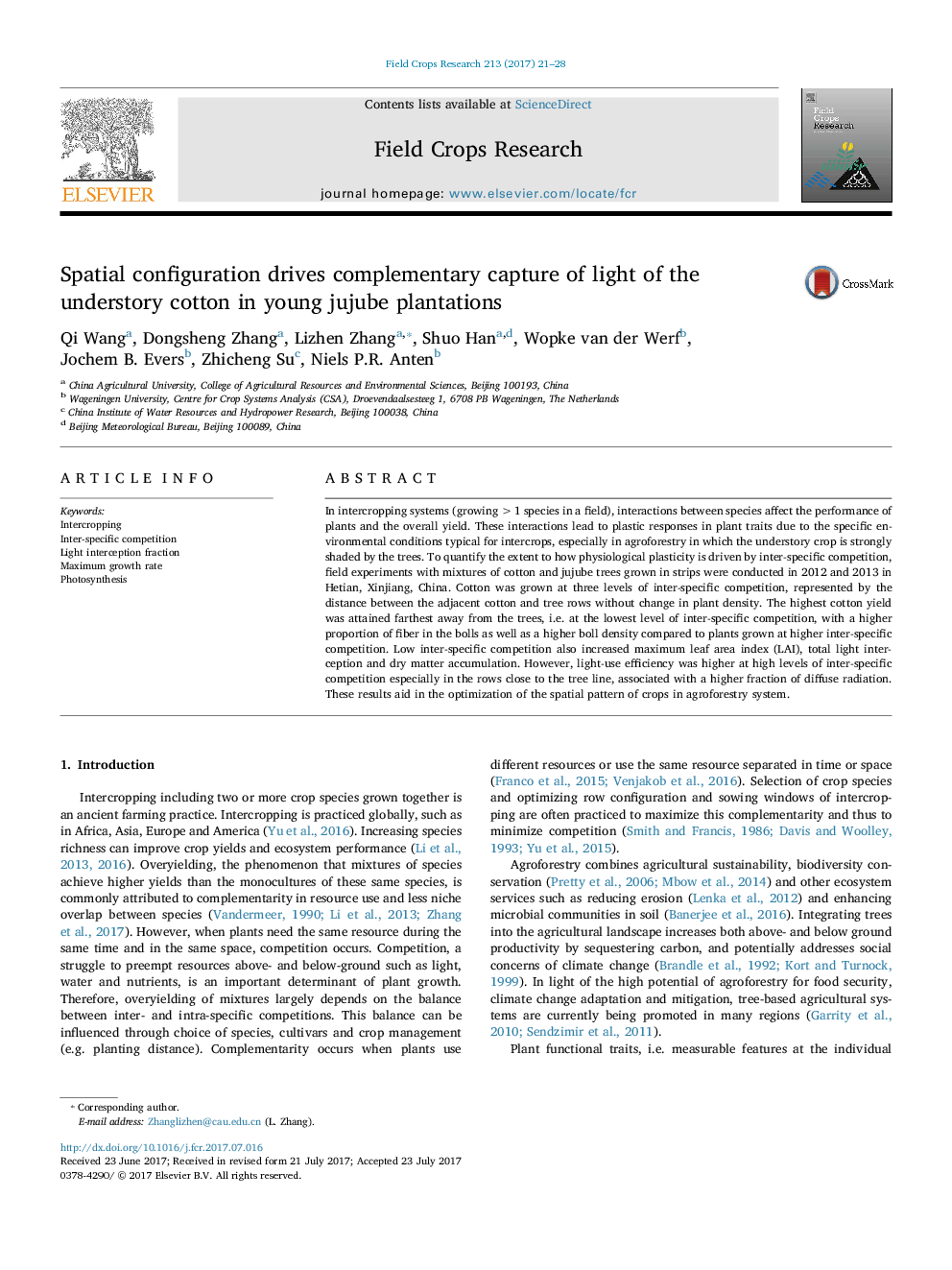ترجمه فارسی عنوان مقاله
پیکربندی فضایی، جذب مکمل از نور پنبه زیره را در گیاهان جوان جوجه کشی می کند
عنوان انگلیسی
Spatial configuration drives complementary capture of light of the understory cotton in young jujube plantations
| کد مقاله | سال انتشار | تعداد صفحات مقاله انگلیسی |
|---|---|---|
| 145872 | 2017 | 8 صفحه PDF |
منبع

Publisher : Elsevier - Science Direct (الزویر - ساینس دایرکت)
Journal : Field Crops Research, Volume 213, November 2017, Pages 21-28
ترجمه کلمات کلیدی
کشت مخلوط، رقابت بین فردی کسری تصرف نور، حداکثر سرعت رشد، فتوسنتز،
کلمات کلیدی انگلیسی
Intercropping; Inter-specific competition; Light interception fraction; Maximum growth rate; Photosynthesis;

